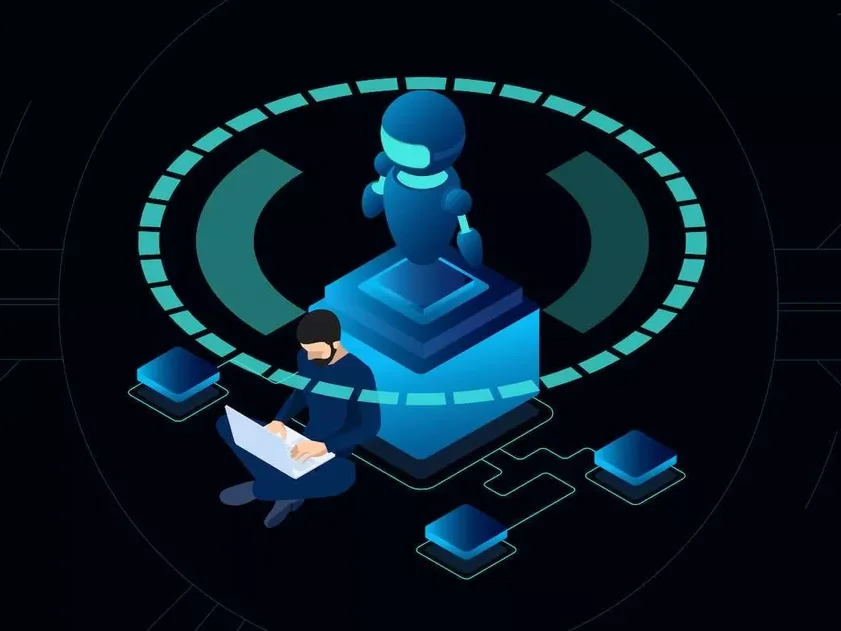Generative AI could transform how today’s companies function, innovate, or interact with customers. Despite its growing significance, many business leaders are still navigating the nuances of this tech. They grapple with its expected perks, hurdles, and consequences. In the article, we’ll delve into the significance of generative AI for enterprises, unravel methods to derive value from it, and offer some insightful suggestions.
What is Generative AI, and Why Does it Matter?
Generative AI falls under the umbrella of AI, or artificial intelligence. Here, machines come up with brand-new content like text, code, voice, images, videos, processes, and even 3D visualizations.
Robust large language models (LLM) marked their breakthrough moment. Take, as an example, MetaDialog’s custom LLM. It understands questions contextually to offer richer responses, seamlessly respond in multiple languages, and deliver cutting-edge performance.
Similar to its AI predecessors, generative AI for enterprise is igniting innovation as businesses seek new ways to use tech to their advantage. While gen AI proves helpful in incremental digitization and basic tasks (e.g., enhancing text-based channels), its real potential shines in more profound opportunities. It creates new services or business models that were not economically feasible before.
Enterprises should pay attention to the tech because it promises to transform how work is conducted. It creates new programming, content management, CX, and product engineering and design possibilities. Moreover, it has the potential to reshape entire business models and industries within the next 5 to 10 years. Ventures must identify a compelling strategy and applicable generative AI use cases swiftly.
The ability to technologically forge text, pics, audio, and video through algorithms, ML, and AI is prompting a reevaluation of age-old business processes. In 2022, just 2% of sizeable organizations’ outbound marketing messages were produced by AI. The percentage is predicted to soar to 30% by 2025.
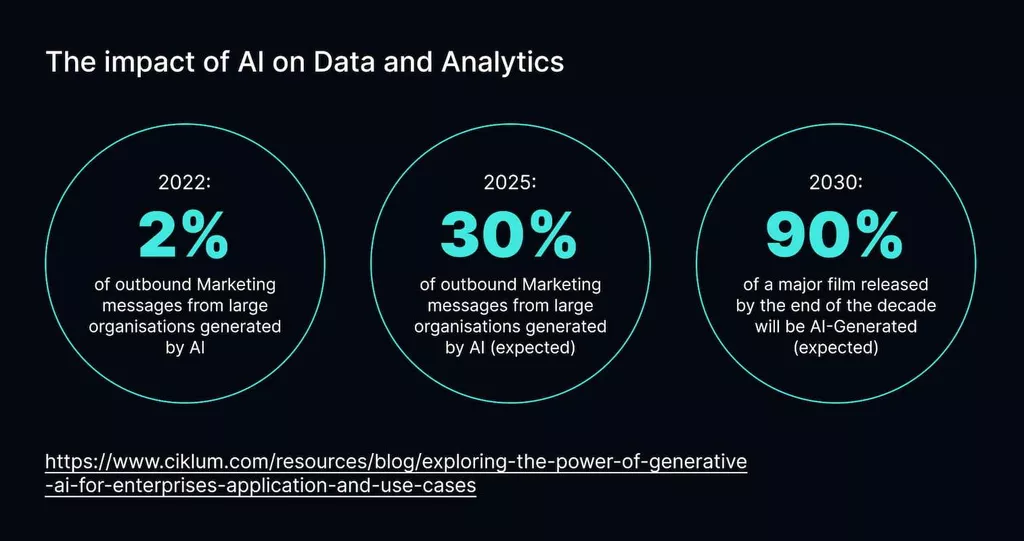
However, enterprise AI, especially LLM-powered chatbots, comes with its share of risks. They spark discussions on potential job losses and legal issues related to intellectual property and ownership. When you navigate the transformative landscape, addressing these challenges becomes integral.
Contrary to concerns, AI is expected to form new jobs, much like every significant technology. Most jobs demand various skills. Artificial intelligence for enterprise applications replaces only part of them. Employees are generally open to using instruments that enhance job efficiency and work efficiency. AI won’t replace people. However, employees will require training to use AI-driven instruments, a responsibility employers must shoulder effectively.
How to Use Gen AI for Enterprise
Among respondents in one survey, 77% acknowledge employing AI as a programming aid. 34% are in the experimental phase, and 44% are actively integrating it into their work. The trend is mirrored in data analysis. A total of 70% expressed involvement, 32% utilized AI, and 38% explored its capabilities. Let’s touch on the primary ways to extract enterprise value from gen AI.
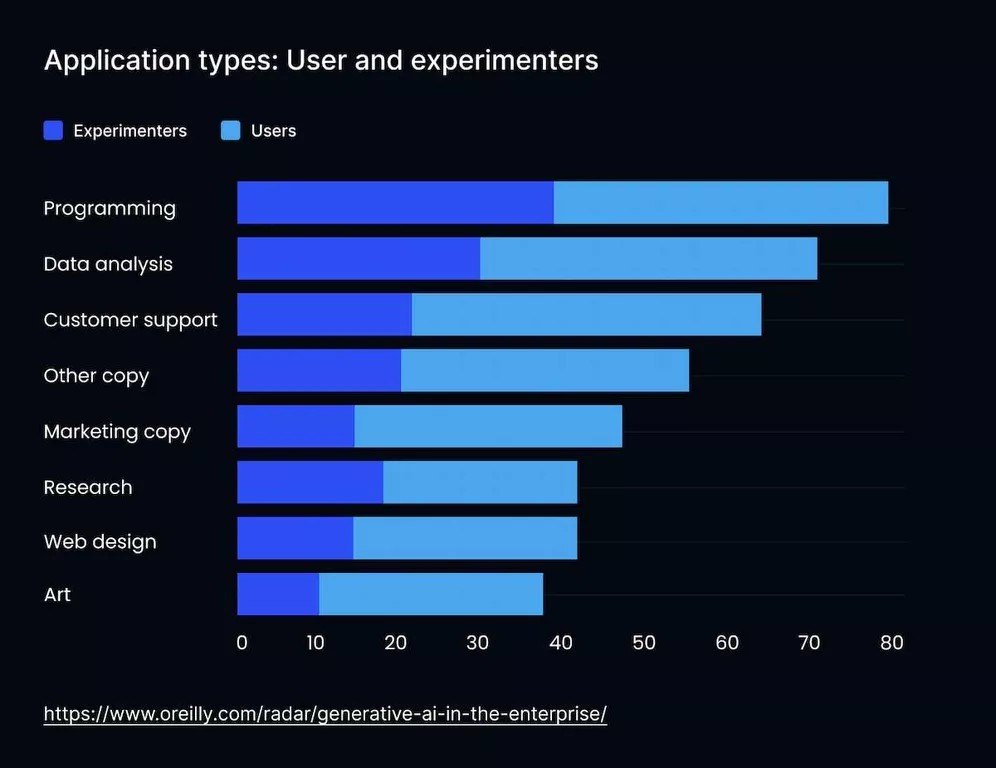
Coding
Gen AI holds significant promise to cater to software vendors and programmers. It enables the creation, completion, and validation of software code sets. A crucial emerging application in this field is QA. Here, AI models take charge of bug fixes, test generation, and diverse documentation tasks.
AI coding instruments are becoming more adept at aiding non-developers. Now, they can generate code based on natural language queries and scenarios. This capability is an advancement in a business landscape that advocates for increased tech democratization and accessibility.
Example: IBM Watson Code Assistant aids developers with AI-generated suggestions. It caters to all experience levels. Developers may request code in plain language or use existing source code to target use cases. It features pre-trained models for various programming languages and ensures reliable and efficient code generation.
Customer Support
Client interactions are stealing the AI spotlight. 65% of the teams say their firms are either examining (that’s 43%) or diving headfirst (22%) into the AI for this very purpose.
Introducing AI into the equation elevates the prowess of human experts. These intelligent assistants adeptly handle tasks like scouring for information, summarizing calls, and scrutinizing transcripts. The result? Empowered customer support managers equipped to identify recurring client concerns and zero in on service gaps. Such an approach enables the enhancement of products and services. It’s driven by invaluable insights gathered from client feedback.
Generative AI for enterprise also facilitates hyper-personalization. Analyzing nuances in call recordings — like word choices, speech rate, and tone — allows this tech to assist organizations in customizing communications. They may craft tailored offerings and ultimately boost client engagement and loyalty.
Example: Expedia Group, the travel tech company known for platforms like Hotels.com and Vrbo.com, has incorporated ChatGPT into its app. Users now seek travel advice directly from the AI helper. It offers a few ideas on destinations, hotels, and transportation. The suggestions might be bookmarked, with availability easily checked on chosen dates.
You may revolutionize your customer support with MetaDialog’s AI Support Platform. The result is 87% automation of your customer support conversations within just one hour. Secure and multilingual AI is customized to align seamlessly with business processes and policies. It effortlessly integrates into your existing customer support software.
Generate content
Today, companies employ AI to automate content creation, predict behaviors, and elevate data analysis. Gartner predicts that in 2025, generative AI is set to claim a significant 10% of all data yielded. It marks a substantial leap from its current humble share of less than 1%.
The primary applications of gen AI in marketing revolve around content creation. It effortlessly generates relevant and coherent content on any subject within seconds. Gen AI takes the reins in generating 25% of the digital content landscape. Forward-thinking brands leverage these instruments to compose and refine various content types — from social media announcements to presentation copies.
Example: ITRex has embraced Gen AI-powered content creation tools. The use spans from refining HR job descriptions to creating articles. It resulted in a remarkable 30% boost in the writers’ productivity. It allowed them to dedicate more time to competitor and end-user research and engaging with subject-matter experts.
Fraud detection and risk management
GenAI proves to be a swift investigative tool. It rapidly scans and summarizes extensive amounts of information to unveil patterns. In the insurance domain, underwriters and claims adjusters leverage the power of AI tools to sift through policies and claims meticulously. They aim to optimize client outcomes.
Moreover, AI takes its capabilities to the next level by meticulously crafting custom reports and personalized summaries. Information is seamlessly delivered directly to adjusters and risk managers. Gen AI emerges as a tool and a strategic partner. It drives precision and efficacy across every facet of the workflow.
Yet, let’s not forget the human touch. Despite AI’s prowess, human judgment and oversight remain indispensable to those crucial final decisions. Ensuring fairness in outcomes and bringing that human perspective to the table are elements no algorithm can substitute. It’s a harmonious blend of AI technology and human expertise that paves the way to get optimal results.
Example: In the fight against credit card fraud, financial giant American Express chose AI adoption. With the help of gen AI, they scrutinized inconsistencies or resemblances with real fraudulent transactions. It empowered them to enhance its strategies, ensuring competitiveness.
Inbound and outbound marketing and sales
The daily grind of personalized emails and engaging chat threads, both in inbound and outbound campaigns, can be an overwhelming challenge. GenAI is poised to alleviate this burden. It seamlessly undertakes the creation and dispatching of content. But it doesn’t stop there. In certain instances, it automates the progression of contacts in the client lifecycle within CRM platforms. This dynamic duo of personalized communication and automated workflows eases the workload. Furthermore, it elevates the efficiency and impact of every interaction in the client journey.
AI tools can be seamlessly embedded into CRM and project management platforms. Moreover, many of these cutting-edge tools come equipped with AI-driven analytics. It means you enhance your content creation and better comprehend what’s clicking (or not) with your current tactics.
Example: ‘Create Real Magic’ is Coca-Cola’s groundbreaking campaign. It merges AI, art, and active customer involvement. Driven by GPT-4 and DALL-E, along with the distinctive Coca-Cola assets, the initiative honors creators from various markets. People can head to createrealmagic.com to unleash their artistic flair with Coca-Cola elements. Standout creations have the chance to shine on billboards in iconic spots like NYC and London.
Business performance reporting and data analytics
AI can distill text and info swiftly into concise summaries. It’s a game-changer, particularly in analyzing unstructured and qualitative information, where extensive processing is typically needed before meaningful insights can be extracted. 73% of decision-makers in data and analytics are actively developing AI tech to unleash their data’s full potential and stay ahead in the competitive landscape.
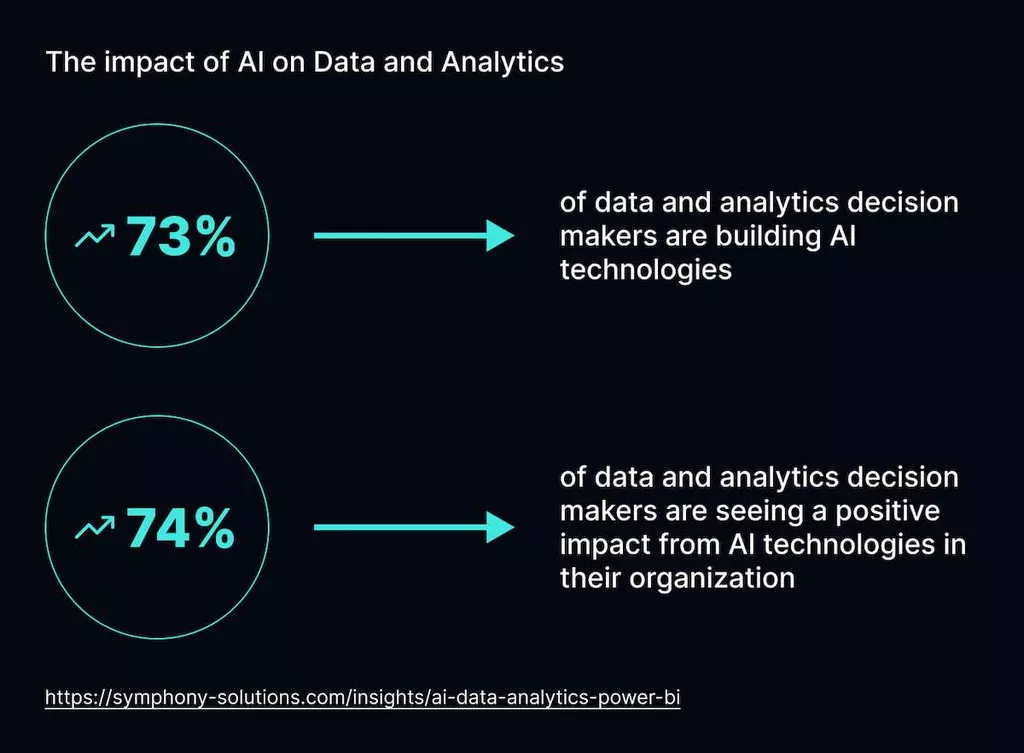
The versatility of this tech in data analytics is reflected in its presence both as standalone products and integrated features within platforms like Power BI. It takes time-honored data analytics a step further by enhancing manual workflows and offering suggestions to data scientists to get improved visuals and user-friendly reports.
Cutting-edge research reveals that 32% of ventures are reaping the rewards of analytics-driven AI. 34% have reported heightened competitiveness coupled with notable enhancements in product functionality.
Example: Salesforce employs AI-powered data analytics to prioritize leads in sales teams and predict sales trends. Through Salesforce’s Einstein Analytics, past data, current market conditions, and client behavior are all scrutinized to enhance sales forecasting and identify potential upsell opportunities.
Generating synthetic data in training and testing
AI has turned into a fantastic help when it comes to crafting synthetic data. Its role goes beyond just training AI models. It helps try out new products and create simulations of real-world situations. This approach reduces your reliance on actual, sometimes sensitive data or expensive external sources. Now, your development cycles get a substantial speed boost. Industries can now fine-tune their AI models swiftly, experiment with exciting new features, and fast-track the release of solutions to hit the market.
Example: Waymo, a subsidiary of Alphabet, harnesses synthetic data to train its self-driving cars. It enables the simulation of a wide range of driving scenarios, expediting the progress of autonomous vehicle tech.
Graphic design and video production
Gen AI is a pivotal force reshaping the creative landscape. Its ability to craft lifelike pics and streamline animation processes positions it as the go-to solution for generating videos effortlessly. There’s no need for actors, specialized video equipment, or editing expertise. Furthermore, AI video generators swiftly produce videos in multiple languages.
Example: In pursuit of 24/7 video coverage in alternative culture, finance, and tech, DeFiance Media embraced generative AI. They established a virtual 3-D newsroom and a lifelike virtual anchor. He can deliver engaging news content. The company is poised to revolutionize traditional media by promptly bringing stories to air as soon as news breaks.
Using Generative AI for Enterprise: Tips and Reminders
Fresh insights from a recent survey reveal that a significant one-third of respondents worldwide claim their organizations routinely integrate generative AI into at least one functional area. 40 percent foresee a boost in AI investments spurred by recent technological strides.
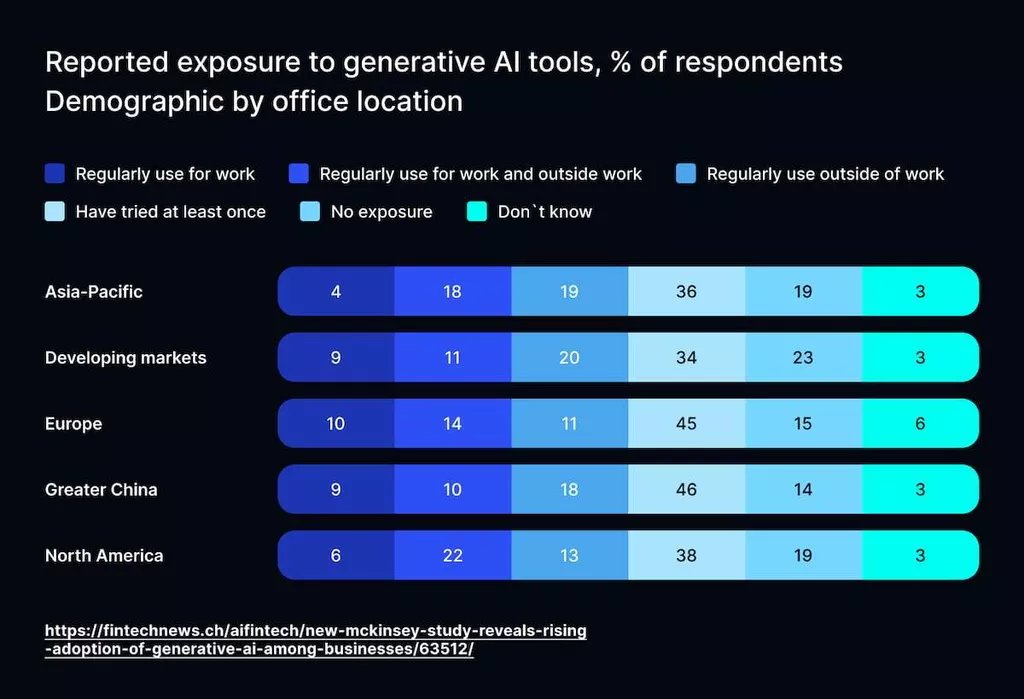
But you don’t have to dive headlong into the hype. Instead, get a more measured approach:
- Craft a thoughtful approach to genAI. Align it seamlessly with your existing AI strategy within the company. The principles steering an AI-driven organization should guide the utilization of AI. It should cover aspects like access to curated info, governance, and the transformation of processes to leverage cognitive workers. Given the rapid evolution of this technology, resist the urge to go solo. Seek support and insights from experts. MetaDialog’s AI team is ready to assist you and bring top-notch solutions to your venture.
- Dive into the foundational technologies driving gen AI. Foster AI awareness among your workforce. Provide training on usage, risks, and capabilities to establish a baseline of knowledge. Keep a vigilant eye on technological advancements and their evolving influence on business risks and opportunities over time.
- Assemble a diverse team, blending business, tech, and visionaries with external experts. It’ll help to brainstorm potential use cases and design AI deployments.
- Prioritize workforce training through workshops and e-learning. Emphasize effective collaboration with AI tools for human-AI synergy. Highlight human strengths that complement the capabilities of the tech. After demonstrating value through carefully measured pilot outcomes, progressively expand capabilities throughout the enterprise.
Moreover, vigilantly monitor model performance and user feedback to identify issues incrementally. It’ll enhance accuracy as models interact with the real world. The prospects of genAI demand a delicate balance between progress and prudence.
Wrapping Up
In 2024, numerous companies are set to implement their genAI strategy. Being among the “early movers” will provide a distinct advantage. It’ll enable you to reap the benefits of enhanced productivity and superior quality associated with the tech. If you haven’t yet acknowledged this trend and formulated a plan for integrating generative AI into your business, now is the opportune moment to do so.
The future is uncertain, but the choices we make today will shape the unfolding narrative of technological advancement. As a leader, you’re presented with a significant opportunity and responsibility to guide the AI revolution towards improving your business. Consider leveraging MetaDialog AI solutions to facilitate this transition. The company offers top-notch solutions — from a support platform to LLMs. The future is beckoning. Let MetaDialog be your guide to excellence in the AI era.
